Luxor, often referred to as the “world’s greatest open-air museum,” is home to some of the most magnificent and historically significant temples in Egypt. This ancient city, once known as Thebes, was the heart of Egypt’s power during the New Kingdom, and its temples serve as monumental reminders of Egypt’s grandeur. From the towering columns of the Temple of Karnak to the majestic halls of the Temple of Luxor, a visit to Luxor is a journey through time. These temples, built in honor of the gods and pharaohs, provide a window into the spiritual and political life of ancient Egypt. Exploring these awe-inspiring structures on a guided tour allows you to uncover the intricate stories and symbolism behind each pillar, statue, and relief, all while learning about the religious practices that shaped Egyptian civilization. In this blog, we’ll take you through the key highlights of Luxor’s temples, offering you a closer look at one of the most iconic destinations in the world.
- Egypt Tour Magic
- Egypt Tour Packages
- Excursions in Egypt
- Cairo Tours and Excursions
- Hurghada Tours and Excursions
- Soma Bay Tours and Excursions
- Makadi Bay Tours and Excursions
- Sahl Hasheesh Tours and Excursions
- El Gouna Tours and Excursions
- Marsa Alam Tours and Excursions
- Port Ghalib Tours and Excursions
- El Quseir Tours and Excursions
- Dendera and Abydos Day Tours
- Aswan Tours and Excursions
- Luxor Tours and Excursions
- Alexandria Tours and Excursions
- Sharm El Sheikh Tours and Excursions
- Top Rated Tours in 2025
- Optional Excursions in Egypt
- Private Transfer
- Blogs About egypt
- Ancient Egypt
- What You Need To know Before Your First Trip To Egypt
- Best Places to Visit in Egypt 2025
- Top Attractions in Red Sea Resorts 2025
- Top 10 Tourist Activities in Egypt
- Top 30 Activities You Can’t Miss in Egypt
- The Guide to Guided Tours in Egypt
- Egypt’s Ancient and Modern History
- The Nile River
- The Deserts of Egypt
- Historical Sites in Egypt
- Cairo
- Alexandria
- Luxor
- Aswan
- The Red Sea
- Dendera Temple
- El Fayoum Oasis
- Bahariya Oasis
- Siwa Oasis
- Al Alamein
- Marsa Matruh
- Ancient Egyptian gods
- famous Egyptian dishes
- UNESCO World Heritage sites
- About Us
- Why Egypt Tour Magic
- Egypt Tour Magic
- Egypt Tour Packages
- Excursions in Egypt
- Cairo Tours and Excursions
- Hurghada Tours and Excursions
- Soma Bay Tours and Excursions
- Makadi Bay Tours and Excursions
- Sahl Hasheesh Tours and Excursions
- El Gouna Tours and Excursions
- Marsa Alam Tours and Excursions
- Port Ghalib Tours and Excursions
- El Quseir Tours and Excursions
- Dendera and Abydos Day Tours
- Aswan Tours and Excursions
- Luxor Tours and Excursions
- Alexandria Tours and Excursions
- Sharm El Sheikh Tours and Excursions
- Top Rated Tours in 2025
- Optional Excursions in Egypt
- Private Transfer
- Blogs About egypt
- Ancient Egypt
- What You Need To know Before Your First Trip To Egypt
- Best Places to Visit in Egypt 2025
- Top Attractions in Red Sea Resorts 2025
- Top 10 Tourist Activities in Egypt
- Top 30 Activities You Can’t Miss in Egypt
- The Guide to Guided Tours in Egypt
- Egypt’s Ancient and Modern History
- The Nile River
- The Deserts of Egypt
- Historical Sites in Egypt
- Cairo
- Alexandria
- Luxor
- Aswan
- The Red Sea
- Dendera Temple
- El Fayoum Oasis
- Bahariya Oasis
- Siwa Oasis
- Al Alamein
- Marsa Matruh
- Ancient Egyptian gods
- famous Egyptian dishes
- UNESCO World Heritage sites
- About Us
- Why Egypt Tour Magic
Exploring the Majestic Temples and Tombs of Luxor
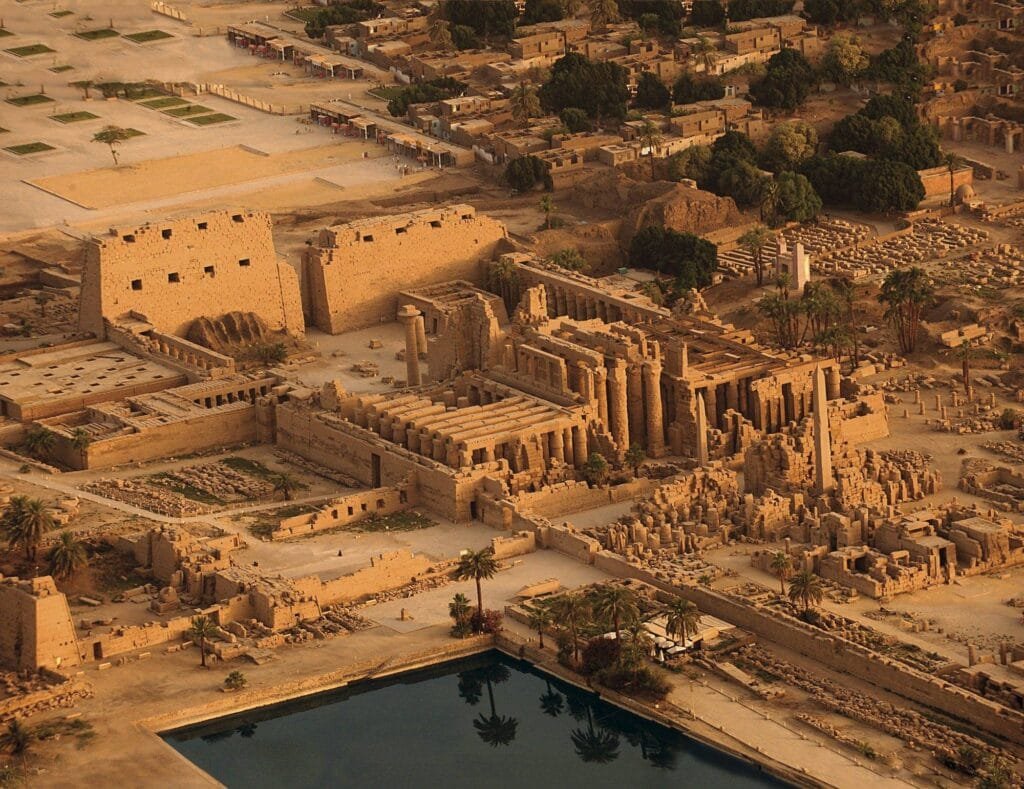
The Temple of Karnak: The Largest Religious Site in Egypt
The Temple of Karnak is perhaps the most impressive of all the temples in Luxor. It is not just a single temple, but a vast complex that spans over 200 acres and includes a collection of chapels, pylons, and sanctuaries dedicated to the gods Amun, Mut, and Khonsu. During a guided tour, you’ll be struck by the sheer scale and grandeur of the temple, which was expanded and modified by various pharaohs over a period of 2,000 years. The Hypostyle Hall, with its 134 massive columns, is one of the most iconic features of the temple. Standing in this hall, surrounded by the towering columns adorned with intricate carvings and hieroglyphs, is a truly awe-inspiring experience. Your guide will explain the religious significance of the temple, which was the center of worship for the god Amun, and how it played a key role in the political and spiritual life of ancient Egypt. The temple's alignment with the sun and the way the light moves through the columns during the equinox will also be highlighted during your visit, adding a mystical dimension to your experience.

The Temple of Luxor: The Center of Worship for Pharaohs
Just a short distance from the Karnak Temple, the Temple of Luxor stands as another remarkable testament to ancient Egyptian architecture and religion. This temple, dedicated to the god Amun-Ra, was constructed over a period of several centuries and served as the spiritual center of Thebes. The temple was primarily used for the annual Opet Festival, which celebrated the divine power of the pharaohs and the gods. As you explore the Temple of Luxor, you’ll be amazed by its impressive avenues lined with statues of Ramses II, the towering obelisk, and the intricately carved reliefs that depict scenes of royal power and divine favor. The guide will explain the purpose of the temple’s layout, which is designed to symbolize the journey of the pharaohs into the afterlife. As you walk along the temple's massive pylons and through the sanctuary, you’ll gain an understanding of the deep spiritual connection between the Pharaohs and the gods, a theme that runs throughout Egyptian history.
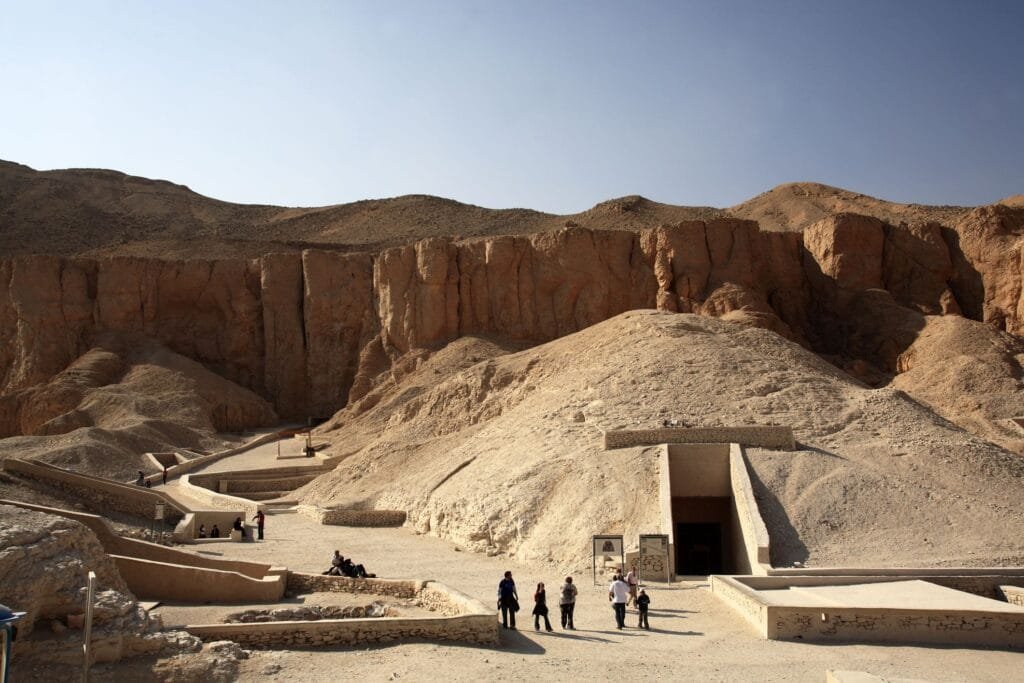
The Valley of the Kings: Royal Tombs and the Afterlife
While the temples of Luxor are magnificent, the Valley of the Kings, located just outside the city, is a must-see for those interested in exploring the tombs of Egypt’s most powerful pharaohs. Many of Egypt’s most famous rulers, including Tutankhamun and Ramses the Great, were buried in the Valley of the Kings, and their tombs are some of the most well-preserved examples of ancient Egyptian burial practices. A guided tour will take you through the Valley of the Kings, where you can visit the tombs of various pharaohs, each decorated with vibrant frescoes and hieroglyphs that tell the story of the Pharaoh’s journey into the afterlife. Your guide will explain the complex burial rituals that were performed to ensure the Pharaoh’s safe passage into the next world, including the items and treasures that were placed in the tombs to accompany the deceased. The tombs themselves are an incredible feat of engineering, carved deep into the rock and adorned with detailed artwork that has survived for over 3,000 years.

The Temple of Hatshepsut: The Queen Who Became a Pharaoh
One of the most unique and fascinating temples in Luxor is the Temple of Hatshepsut, dedicated to the female pharaoh who ruled Egypt in the 15th century BCE. This stunning temple, carved into the cliffs of Deir el-Bahari, is an architectural masterpiece, with its terraced levels and colonnaded halls. Hatshepsut’s reign is one of the most successful in ancient Egyptian history, and her temple serves as a symbol of her power and achievements. During your tour, you’ll learn about her rise to power, her ambitious building projects, and her military successes. The temple is filled with intricate reliefs that depict Hatshepsut's divine birth, as well as scenes of her expeditions to the land of Punt. The guide will also explain the political and cultural significance of her reign, as she was one of the few women to ever rule Egypt as a Pharaoh. The temple’s design, with its harmonious integration into the natural landscape, reflects Hatshepsut’s ability to blend political power with divine legitimacy.
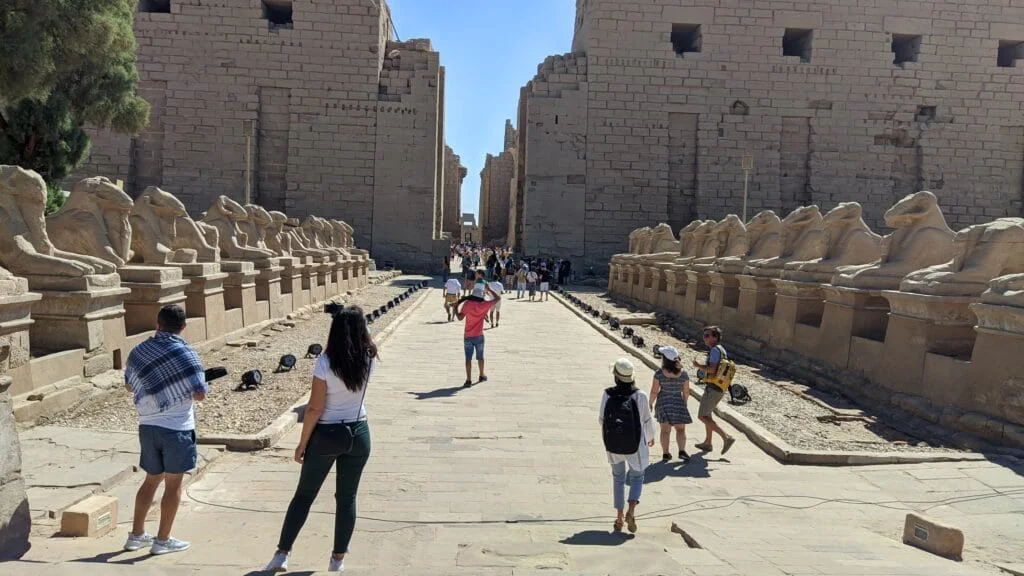
Why a Guided Tour is Essential in Luxor
While Luxor’s temples are impressive on their own, a guided tour offers a much deeper and more enriching experience. Egyptologists and experienced guides provide essential context that brings the history of these temples to life. They can interpret the hieroglyphs, explain the symbolism behind the architectural elements, and offer fascinating insights into the rituals and beliefs that shaped the construction of these sites. A guide will also take you beyond the typical tourist spots, pointing out lesser-known details that you might otherwise miss, such as hidden inscriptions or overlooked carvings. Moreover, the ancient Egyptian worldview, with its focus on gods, pharaohs, and the afterlife, is complex and layered, making a guided tour the best way to fully grasp the significance of what you're seeing. Whether you’re interested in ancient religion, art, architecture, or history, a guided tour of the Temples of Luxor ensures that you will leave with a deeper understanding and appreciation of one of Egypt’s most captivating destinations.
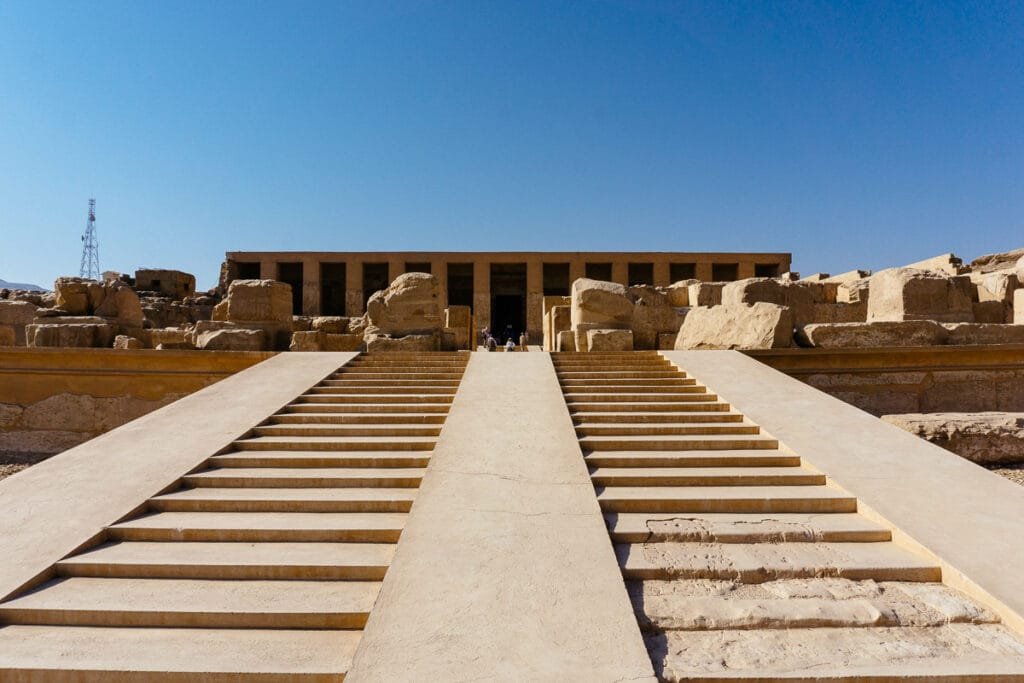
The Temple of Seti I: A Hidden Gem of Luxor
The Temple of Seti I, located in Abydos, is a lesser-known yet incredibly significant site in Egyptian history. Dedicated to the god Osiris, the temple was built by Seti I, one of Egypt’s greatest pharaohs, and it serves as a symbol of his devotion to the gods and the afterlife. The temple’s walls are adorned with some of the most intricate reliefs in Egypt, illustrating the king’s military campaigns, religious rites, and divine interactions. One of the most notable features of the temple is the Osireion, an underground chamber believed to be the burial place of Osiris, the god of the afterlife. A guided tour of Seti I’s temple provides an in-depth look at the religious significance of the site and the role it played in the pharaoh’s journey to the afterlife. The temple also contains depictions of the king’s victories, as well as the famous King List, which lists the names of previous pharaohs and is a vital resource for understanding ancient Egyptian chronology. Exploring this lesser-known site allows you to step away from the crowds and experience one of Egypt’s most beautifully preserved ancient temples.
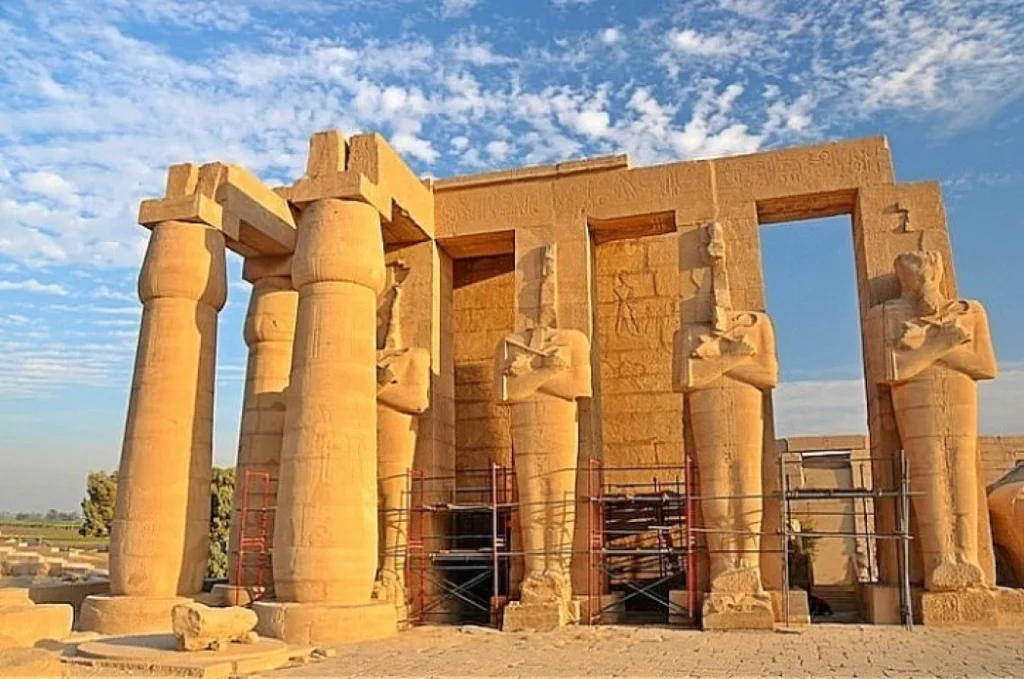
The Ramsesium: The Mortuary Temple of Ramses II
The Ramsesium, the mortuary temple of Ramses II, is located on the west bank of Luxor and is one of the most impressive remnants of the New Kingdom. Although much of the temple is now in ruins, its grandeur still resonates. Built to honor Ramses II, one of Egypt’s most celebrated pharaohs, the Ramsesium was originally adorned with colossal statues and massive pylons, most notably a 60-foot-tall statue of the pharaoh seated on his throne. Today, the ruins reveal a glimpse of the temple’s once-majestic scale, with well-preserved reliefs that depict Ramses II’s military victories and his divine role as a ruler. The Hypostyle Hall is filled with intricate carvings, and many of the columns are still standing, allowing visitors to imagine the temple’s original splendor. A guided tour of the Ramsesium offers a fascinating insight into the life and reign of Ramses II, exploring his building projects, military campaigns, and religious significance. The temple also serves as an important symbol of Ramses’ attempt to secure his legacy and divine power in the afterlife, ensuring that his reign would be remembered for eternity.
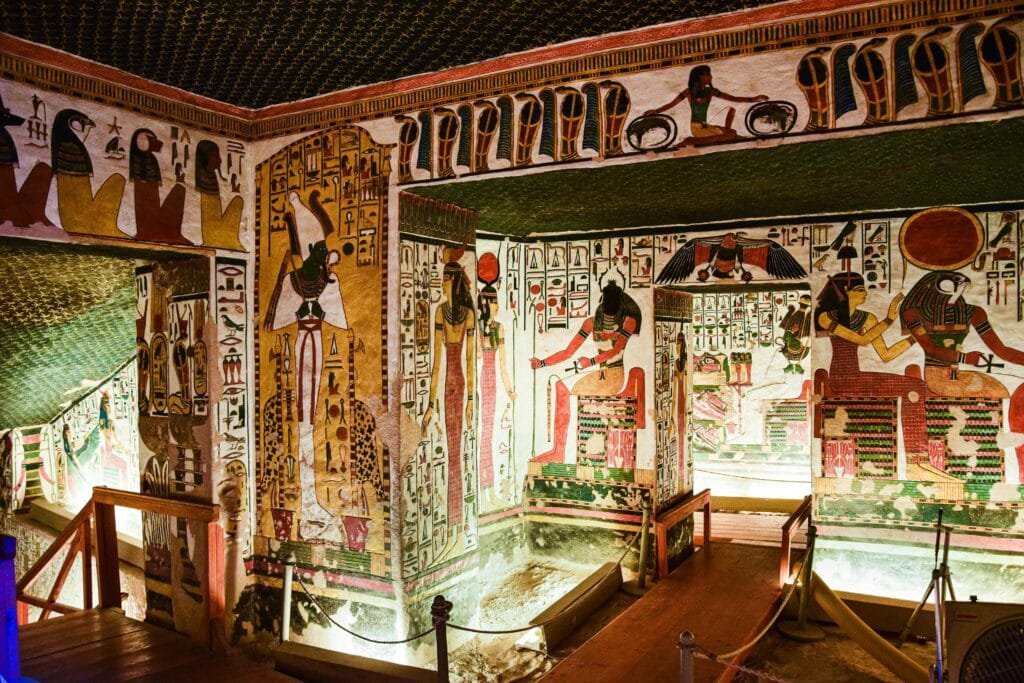
The Valley of the Queens: The Burial Place of Royal Women
The Valley of the Queens, located on the west bank of Luxor, is an extraordinary burial site that provides insight into the lives of Egypt’s royal women, including wives and children of the pharaohs. Unlike the Valley of the Kings, which houses the tombs of male rulers, the Valley of the Queens is the final resting place for queens, princesses, and other royal family members. The valley contains over 90 tombs, many of which are richly decorated with vibrant frescoes and intricate hieroglyphs. These tombs offer a rare glimpse into the lives and afterlives of the women who played crucial roles in the royal court. Among the most famous tombs is that of Nefertari, the beloved wife of Ramses II, whose tomb is known for its stunning wall paintings that depict her journey to the afterlife. A guided tour of the Valley of the Queens provides an opportunity to learn about the burial rituals, the symbolism of the tomb art, and the unique role of royal women in ancient Egyptian society. The serene surroundings of the valley further enhance the mystical atmosphere of this sacred site.

The Colossi of Memnon: Monumental Statues of Pharaoh Amenhotep III
The Colossi of Memnon, two massive statues that once flanked the entrance to the mortuary temple of Amenhotep III, stand as towering remnants of Egypt’s ancient grandeur. Each statue depicts the pharaoh seated on a throne, with his hands resting on his knees and his facial features expressing a calm authority. Originally standing 60 feet tall, the statues have become famous for the “singing” sound they once emitted at dawn. This phenomenon, caused by temperature changes and moisture seeping through the stone, was believed to be a mystical voice of the pharaoh speaking from the afterlife. The Colossi of Memnon are some of the most iconic symbols of Egypt’s New Kingdom. A guided tour will explain the historical context of the statues, their original purpose, and the significance of Amenhotep III’s reign. Although the temple itself has largely been destroyed by time and natural forces, the statues remain as an enduring reminder of the majesty of ancient Egypt and the eternal power of its rulers. The Colossi also serve as a testament to the pharaoh’s efforts to ensure his immortality, standing proudly as silent sentinels to the past.
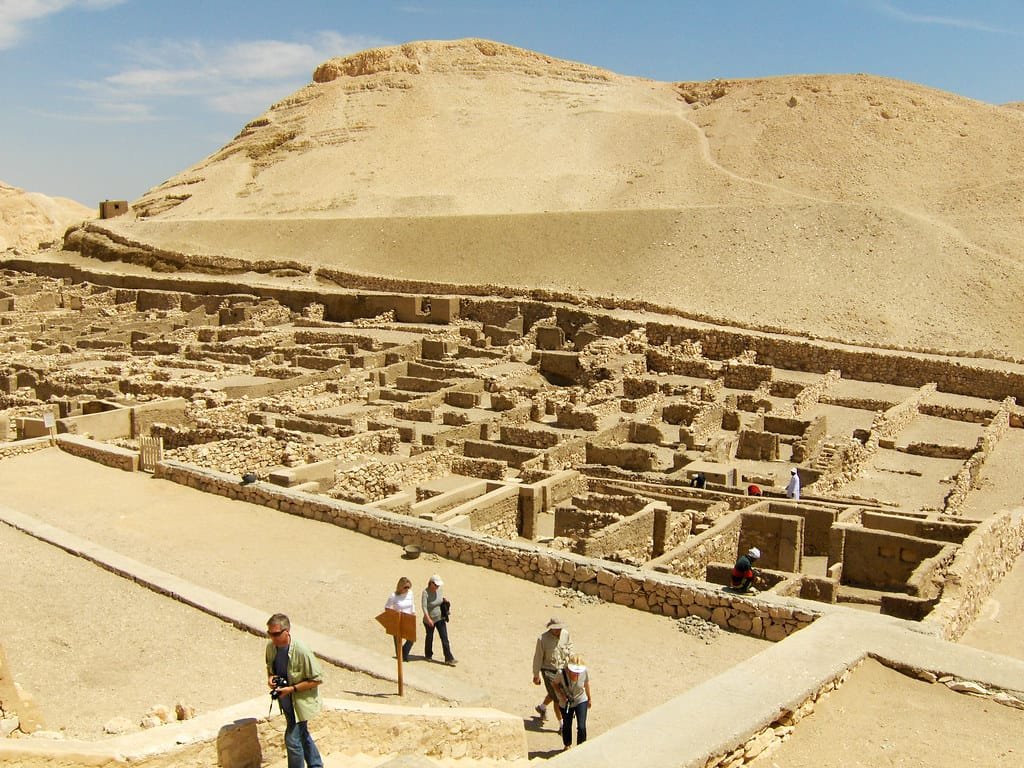
Deir el-Medina: The Village of the Tomb Builders
Deir el-Medina, the village of the artisans who built the tombs in the Valley of the Kings and the Valley of the Queens, is a unique and fascinating site that offers a glimpse into the lives of ancient Egypt’s workers. The workers who lived here were skilled craftsmen, artists, and laborers who created the tombs and burial goods for the royal family. The village, which is well-preserved, contains the homes of these artisans, where they lived with their families and spent their days carving tombs and decorating them with intricate murals and inscriptions. Many of the homes still feature murals depicting daily life, religious beliefs, and family scenes. A guided tour through Deir el-Medina offers insight into the lives of these artisans and the importance of their work in ensuring the pharaohs’ safe passage to the afterlife. Visitors will learn about the social structure of the village, the religious practices of the tomb builders, and the technical skills required for the delicate work they performed. The site also contains several well-preserved tombs of the artisans, offering further insight into the tomb construction process and the religious rituals that accompanied the burial of the deceased.
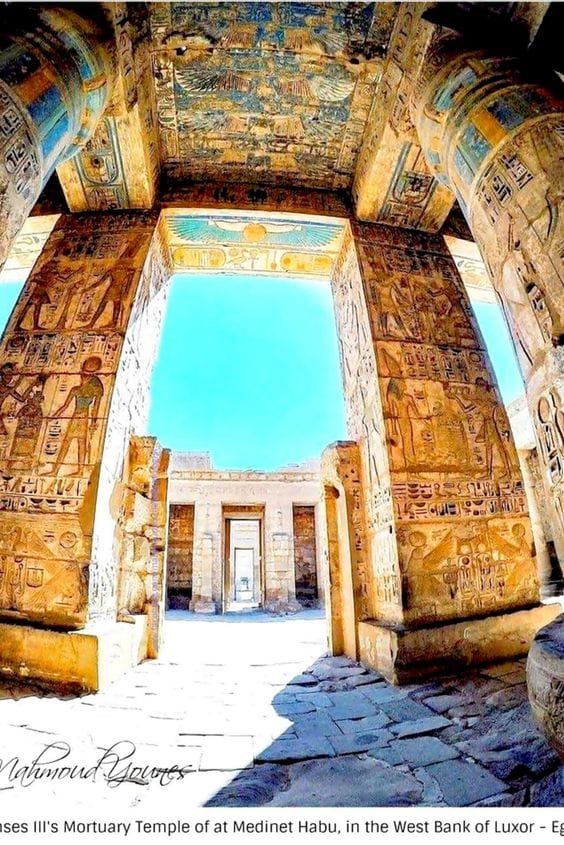
Madinat Habu: The Temple of Ramses III
The Temple of Ramses III, located at Madinat Habu, is one of the most significant and well-preserved temples on the west bank of Luxor. Built to commemorate Ramses III’s reign, this mortuary temple is a prime example of New Kingdom architecture, featuring grand courtyards, pylons, and a hypostyle hall. Ramses III is best known for successfully defending Egypt against invasions by the Sea Peoples, and the reliefs on the walls of the temple depict his military victories, including detailed scenes of the battle against these invaders. The temple is also adorned with beautiful scenes from the Book of the Dead, illustrating the pharaoh’s journey to the afterlife and his divine protection. A guided tour of Madinat Habu will provide visitors with an in-depth understanding of the temple’s religious and historical significance, exploring its role in the king’s posthumous worship and the restoration of Egypt’s power after external threats. The temple also stands as a testament to Ramses III’s desire to ensure that his memory lived on and that his soul would continue to be honored for eternity.


